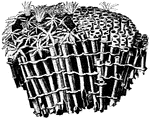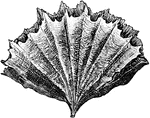Clipart tagged: ‘Cnidaria’
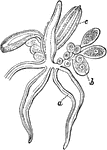
Athorybia Gonoblastidium
"Gonoblastidium of Athorybia rosacea, bearing three hydroclysts, a, a gynophore, b, and two androphores,…
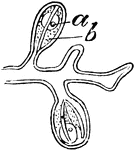
Athorybia Gonophores
"A, female gonophores of Athorybia rosacea on their common stem or gynophore: a, ovum; b, radial canals."…
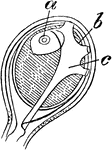
Athorybia Gonophores
"C, female gonophores: a, genital vesicle; b, vitellus; c, radial canals." -Whitney, 1911
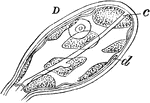
Athorybia Gonophores
"D, female gonophores, enlarged: c, radial canals; d, canal of manubrial cavity." -Whitney, 1911

Madrepore Coral
Madrepore ("mother of pores") is a coral of the genus Madrepora, found often forming reefs or islands…

Madrepore Coral
Madrepore ("mother of pores") is a coral of the genus Madrepora, found often forming reefs or islands…
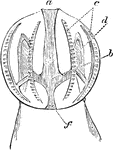
Ctenopore
The phylum Ctenophora , commonly known as comb jellies, is a phylum that includes the sea gooseberry…
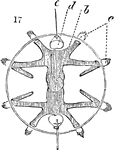
Transverse Section of Ctenopore
The phylum Ctenophora , commonly known as comb jellies, is a phylum that includes the sea gooseberry…
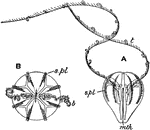
Hormiphora Plumosa
"Hormiphora (Cydippe) plumosa. A, from the side; B, from the aboral pole. mth, mouth; s. pl, swimming…

Medusa of a Hydroid
Colonial, plant-like animals closely related to jellyfish, with stinging cells, Any member of the invertebrate…
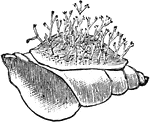
Hydrozoa Encrusting a Small Shell
Hydrozoa (hydrozoans) are a taxonomic class of very small, predatory animals which can be solitary or…
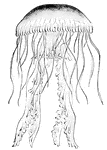
Jellyfish
Jellyfish are saucer-shaped and can be a foot or more in diameter. They are gelatinous and semitransparent.

Lion's Mane Jellyfish
"Scyphistoma stage of Cyanaea capillata, showing two ordinary hydrae tubae, between which are two others,…

Portuguese Man-of-War
The Portugures man-of-war has a bladderlike float, and locomotion depends upon the wind and current.…

Sea-Fir
The Sea-Fir (Sertularia tubitheca) is mistaken as a plant but is actual a hydrozoan animal of the phylum…

